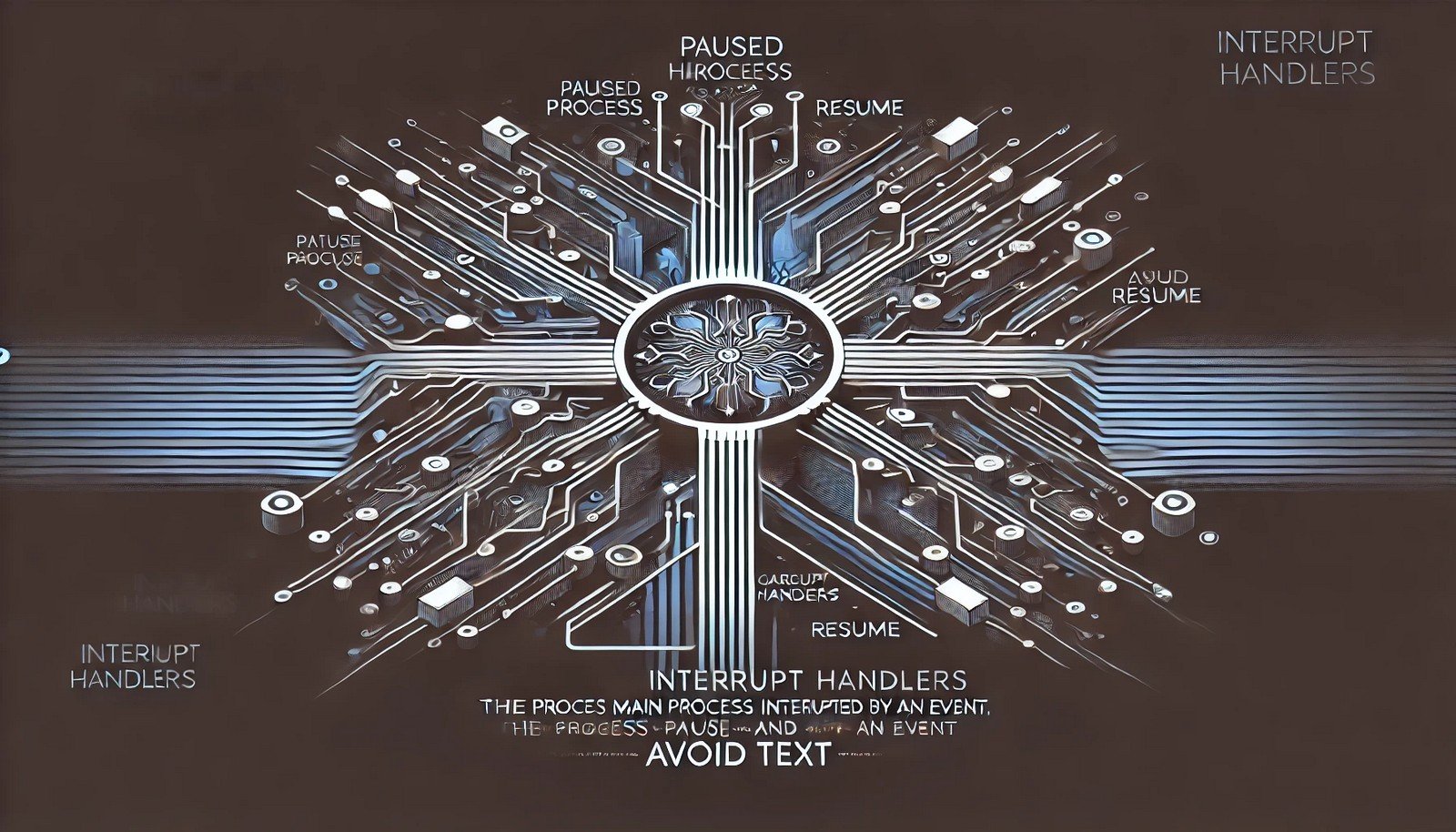Interrupt Handlers

(Representational Image | Source: Dall-E)
Quick Navigation:
- Interrupt Handlers Definition
- Interrupt Handlers Explained Easy
- Interrupt Handlers Origin
- Interrupt Handlers Etymology
- Interrupt Handlers Usage Trends
- Interrupt Handlers Usage
- Interrupt Handlers Examples in Context
- Interrupt Handlers FAQ
- Interrupt Handlers Related Words
Interrupt Handlers Definition
Interrupt handlers, also known as interrupt service routines (ISRs), are specialized software routines in an operating system or device driver that respond to specific hardware or software interrupts. An interrupt is a signal indicating an event that needs immediate attention. Interrupt handlers prioritize critical tasks over normal execution, allowing the system to respond to events like keyboard input, hardware failures, or system timers in real time. They ensure smooth multitasking by addressing high-priority events without disrupting the overall workflow.
Interrupt Handlers Explained Easy
Think of interrupt handlers like fire alarms in a school. If the fire alarm goes off, the teacher stops the lesson, and everyone exits the classroom. Similarly, interrupt handlers pause the main work of the computer to respond to something important, like a key being pressed or a message from another device. After addressing the event, the computer goes back to what it was doing.
Interrupt Handlers Origin
The concept of interrupt handlers originated with the development of early computers to handle real-time tasks. As systems evolved in complexity, interrupt handling became essential for effective multitasking and responsive computing environments.
Interrupt Handlers Etymology
The term “interrupt” derives from Latin "interrumpere," meaning "to break apart," reflecting the temporary pause of the main process.
Interrupt Handlers Usage Trends
Interrupt handlers have been integral in real-time systems, embedded devices, and general computing. With the rise of Internet of Things (IoT) and advanced hardware, their role has expanded. Modern systems use them in robotics, industrial automation, and consumer electronics. Efficient interrupt handling remains crucial for optimal system performance.
Interrupt Handlers Usage
- Formal/Technical Tagging:
- Real-Time Systems
- Operating Systems
- Device Drivers - Typical Collocations:
- "interrupt service routine"
- "hardware interrupt handler"
- "software interrupt management"
- "real-time interrupt response"
Interrupt Handlers Examples in Context
- A keyboard interrupt handler detects when a key is pressed and sends the input to the operating system.
- A network interrupt handler manages incoming data packets for seamless online communication.
- Interrupt handlers in a smartphone control notifications and system alerts without affecting ongoing tasks.
Interrupt Handlers FAQ
- What is an interrupt handler?
An interrupt handler is a software routine that manages interrupt signals from hardware or software. - Why are interrupt handlers important?
They allow real-time response to critical events, ensuring smooth multitasking in computing. - How do interrupt handlers work?
When an interrupt occurs, the handler pauses the current process, executes its task, and resumes the process. - What are hardware interrupts?
Hardware interrupts come from physical devices like keyboards or network cards signaling the CPU. - What is a software interrupt?
A software interrupt is triggered by a program or operating system to request a service or signal an event. - Can interrupt handlers be nested?
Yes, nested interrupt handling allows one interrupt to be interrupted by another higher-priority interrupt. - What are common uses of interrupt handlers?
They are used in device drivers, real-time systems, networking, and embedded devices. - How does interrupt latency affect performance?
High interrupt latency can slow down the system, while low latency improves real-time responsiveness. - How are interrupt handlers different from polling?
Polling checks for events regularly, while interrupt handlers respond only when an event occurs. - What is an interrupt vector?
An interrupt vector is a memory location that stores the address of the corresponding interrupt handler.
Interrupt Handlers Related Words
- Categories/Topics:
- Operating Systems
- Embedded Systems
- Real-Time Computing
Did you know?
Interrupt handlers were critical in the development of early space exploration systems, ensuring real-time responses for guidance and navigation during Apollo missions.
PicDictionary.com is an online dictionary in pictures. If you have questions or suggestions, please reach out to us on WhatsApp or Twitter.Authors | Arjun Vishnu | @ArjunAndVishnu

I am Vishnu. I like AI, Linux, Single Board Computers, and Cloud Computing. I create the web & video content, and I also write for popular websites.
My younger brother, Arjun handles image & video editing. Together, we run a YouTube Channel that's focused on reviewing gadgets and explaining technology.



Comments powered by CComment